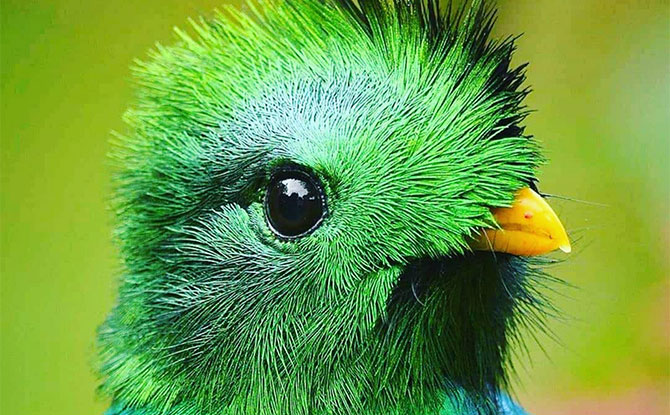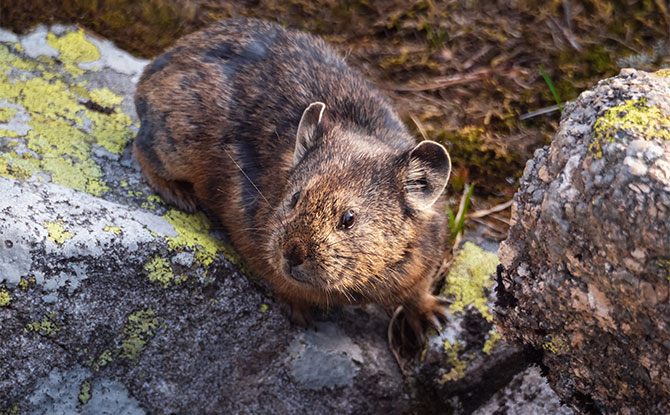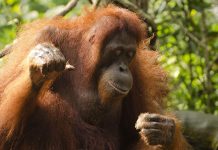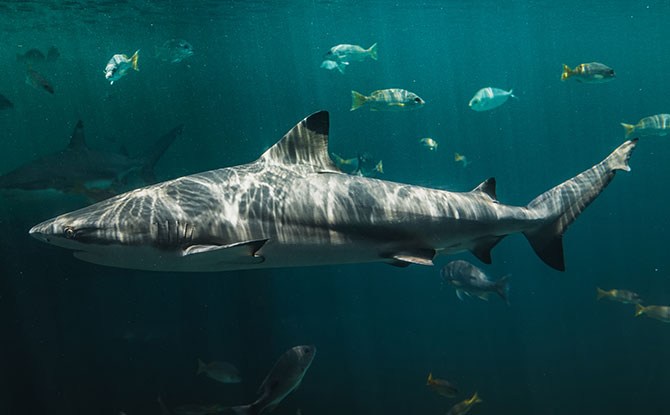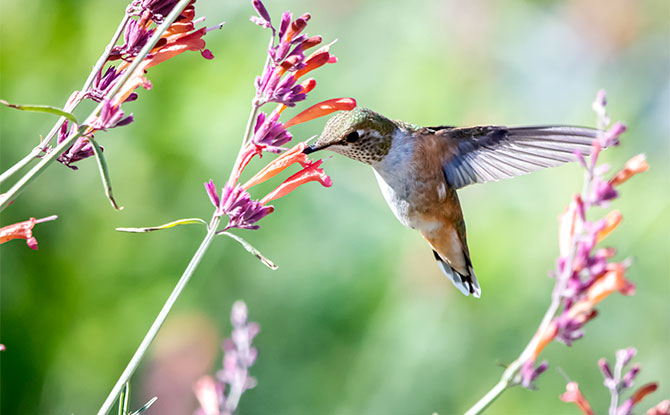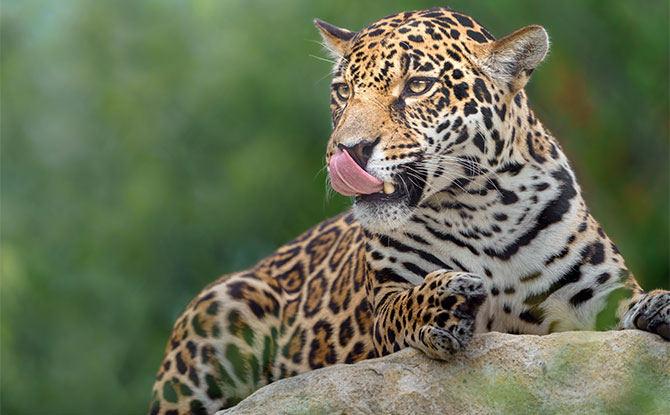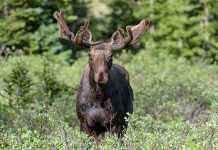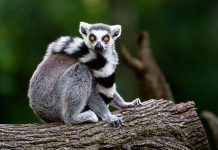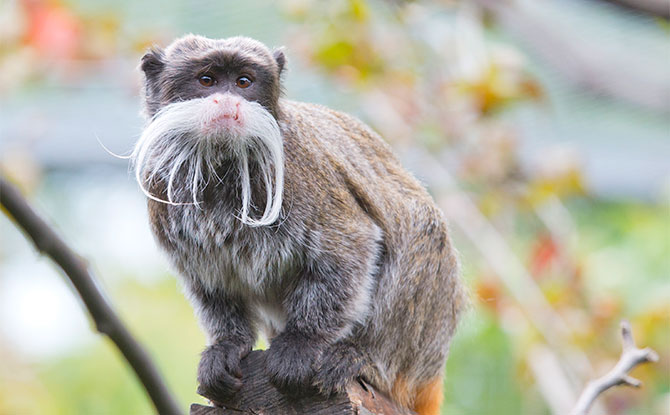

Welcome to our fascinating exploration of animals that start with E. We will take you on a journey through the incredible world of E animals, from majestic elephants to elusive egrets. Discover the diverse range of species that begin with the letter E, spanning different habitats and showcasing unique characteristics.
38 Animals starting with E with Interesting Facts
Whether you’re interested in learning about the largest land mammal, the African elephant, or the mesmerizing flight patterns of eagles, this article has something for everyone. We will delve into the lives of these creatures, exploring their habitats, behaviors, and conservation status.
- Elephant
- Eagle
- Emu
- Elk
- Eel
- Egret
- Earthworm
- Echidna
- Eurasian Lynx
- Eastern Gray Kangaroo
- Ermine
- Electric Eel
- Emperor Penguin
- European Hedgehog
- Eastern Diamondback Rattlesnake
- Eastern Screech Owl
- European Robin
- Eastern Bluebird
- Eastern Box Turtle
- European Otter
- Eastern Chipmunk
- European Badger
- Eastern Quoll
- Eland
- Eurasian Beaver
- Emperor Tamarin
- Eastern Brown Snake
- European Green Woodpecker
- Eastern Hognose Snake
- Emperor Moth
- European Mole
- Eastern Newt
- European Hare
- Eastern Gorilla
- Eurasian Red Squirrel
- Egyptian Mongoose
- European Rabbit
- European Goldfinch
Join us on this adventure as we uncover the wonders of animals beginning with E. So, let’s embark on this exciting journey and discover the incredible diversity of animals. Get ready to be amazed by the wonders of the animal kingdom!
Elephant
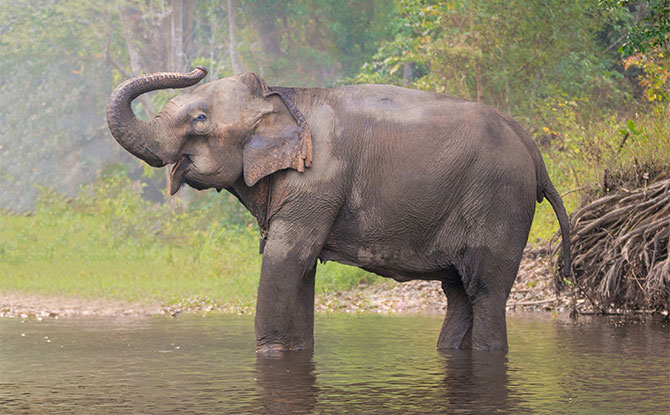

BE PSLE-READY: Join Expert Educators for Revision Boosters to Empower P6 Students
BURP: Join the Sound Collector on a Whimsical Chase at Esplanade – Theatres on the Bay
WEEKEND IDEAS: Get Inspirational Ideas of Things to Do
Elephants are remarkable creatures that captivate us with their size and intelligence. They are the largest land mammals on Earth, with both African and Asian elephants belonging to this incredible species. These majestic animals have diverse habitats across Africa and Asia and play a critical role in maintaining the ecological balance of their respective ecosystems.
The African elephant is the largest and heaviest land animal, characterized by its imposing size and distinctive large ears. These magnificent creatures can weigh up to several tons and stand tall with their iconic curved tusks. They primarily inhabit the savannas and forests of Africa, where they roam in close-knit family groups led by wise matriarchs.
Asian elephants, on the other hand, are slightly smaller than their African counterparts but are no less awe-inspiring. They have smaller ears and a more rounded back. Asian elephants are found in various countries across Asia, including India, Thailand, and Indonesia. These gentle giants are highly revered in local cultures and have played an integral role in human history.
Elephants exhibit remarkable intelligence and social behavior. They have complex communication systems and can display a wide range of emotions. These magnificent creatures also showcase incredible memory and problem-solving skills. Their tight-knit family structures contribute to their well-being and survival in challenging environments.
Read more interesting elephant facts for kids.
Eagle


Eagles are majestic birds of prey that are known for their impressive physical characteristics and hunting abilities. There are several species of eagles, including the bald eagle and the golden eagle, both of which are iconic symbols of strength and power.
One of the most recognizable eagles is the bald eagle, which is native to North America. It is known for its distinctive white head and tail feathers, contrasting against its dark brown body. The bald eagle is an apex predator and is often found near bodies of water, where it hunts for fish, its primary food source.
The golden eagle, on the other hand, is found across the Northern Hemisphere, including North America, Europe, and Asia. It is known for its beautiful golden-brown feathers and impressive wingspan, which can reach up to seven feet. The golden eagle is a formidable hunter and is known to take down larger prey, such as rabbits, hares, and even young deer.
Eagles are known for their keen eyesight, powerful talons, and strong beaks, which they use to catch and tear apart their prey. They have excellent hunting skills and can soar through the sky with great agility and precision. Their strong wings allow them to fly long distances and reach high altitudes, making them efficient hunters in their respective habitats.
In addition to their physical attributes and hunting prowess, eagles hold cultural significance in various societies and mythologies. They are often revered as symbols of freedom, courage, and power. The eagle’s majestic presence and commanding flight have made it a popular subject in art, literature, and national emblems.
Emu


The emu is a fascinating flightless bird native to Australia. Known for their unique characteristics, emus are distinguished by their tall stature and powerful legs. Standing up to 6 feet tall, they are the second-largest living bird in the world. Emus have adapted to various habitats across Australia, from grasslands to forests, and can also be found in captivity around the world.
Emus have a diverse diet, consisting of plants, fruits, seeds, insects, and small vertebrates. Their large size and powerful legs enable them to run at speeds of up to 30 miles per hour, making them exceptional runners. Emus also have impressive reproductive habits, with the males taking on the responsibility of incubating the eggs and caring for the chicks once they hatch.
In addition to their ecological importance in Australian ecosystems, emus hold cultural significance for Indigenous Australians. They are often depicted in traditional artwork and have been a source of food and resources for indigenous communities for thousands of years.
Elk


Elks are large members of the deer family that inhabit various regions of North America. Known for their impressive antlers, elks are not only visually striking but also play a significant role in ecosystems.
Elks are among the largest deer species, with adult males weighing up to 1,100 pounds and standing around 5 feet at the shoulder. They are easily recognizable by their branched antlers, which can reach impressive lengths of up to 4 feet.
Elks are highly adaptable and can thrive in a variety of habitats, including forested areas, open meadows, and mountainous regions. They are particularly abundant in the western parts of North America, such as the Rocky Mountains and the Pacific Northwest.
They are social animals and typically form herds during non-breeding seasons. During the mating season, known as the rut, males engage in dramatic displays of dominance to attract females. They use their antlers to spar with rival males, establishing hierarchy within the herd.
Eel
Eels are fascinating creatures that can be found in both saltwater and freshwater environments. They have a distinct body structure that sets them apart from other fish. With their long, snake-like bodies, they are able to navigate through narrow openings and explore various habitats.
As marine animals, eels play an important role in the diverse ecosystem of the ocean. They are known for their voracious appetite and varied diet, which includes fish, crustaceans, and even smaller eels. This not only helps to control populations of other marine creatures but also contributes to the overall balance of marine life.
But eels are not limited to the saltwater environment. Some species, like the American eel, are able to adapt to freshwater habitats as well. They are able to migrate long distances, traveling from freshwater rivers and streams to the open ocean and back again, to complete their life cycle. This unique behavior showcases their remarkable ability to survive and thrive in different environments.
Eels are not a single species, but rather a diverse group with over 800 known species. They can be found in various regions around the world, from the tropical waters of the Caribbean to the rivers of Europe and Asia. Each species has its own set of characteristics and adaptations that allow it to thrive in its specific habitat.
Egret


Egrets are graceful wading birds known for their long legs and elegant presence. These beautiful birds can be found in various wetland habitats around the world.
There are several species of egrets, each with its own unique characteristics. They include the great egret, snowy egret, and cattle egret. These birds are expert hunters, known for their ability to wade in shallow waters and catch fish, frogs, and other small prey.
One of the key features of egrets is their preference for wetland habitats. These areas, such as marshes, swamps, and coastal wetlands, provide the perfect conditions for egrets to thrive. The abundance of food sources and shelter in these habitats makes them ideal for nesting and breeding.
Egrets have adapted to their wetland habitats in various ways. Their long legs enable them to wade through shallow water, while their sharp beaks help them to catch and consume their prey efficiently. Additionally, their plumage is often white, which helps them blend in with their surroundings and stay camouflaged while hunting.
Earthworm


Earthworms play a crucial role in maintaining soil health and promoting ecosystem balance. These humble creatures, often found in gardens and agricultural fields, are not just your average wriggly worms. They are decomposers that break down organic matter, recycle nutrients, and improve soil structure, all of which are essential for sustainable agriculture practices.
One of the remarkable features of earthworms is their unique structure. Their bodies are segmented, allowing them to move through the soil using their muscles and tiny bristles called setae. These movements create channels and burrows in the soil, facilitating aeration and water filtration. These channels also provide pathways for plant roots to penetrate the soil, promoting healthier root development.
As decomposers, earthworms feed on decaying organic matter such as leaves, plant debris, and dead animal material. They break down these materials through digestion, releasing nutrients back into the soil. This nutrient cycling process is vital for maintaining soil fertility and supporting plant growth. In fact, earthworms are known to enhance the availability of essential nutrients like nitrogen, phosphorus, and potassium in the soil, making them accessible to plants.
Furthermore, earthworms improve soil structure by mixing organic matter with mineral particles. They create aggregates, or clumps of soil, that have better water-holding capacity and improved drainage. This results in soil that is more resistant to erosion and compaction. Their burrowing activities also help to enhance soil porosity, allowing for better infiltration of water and air, which are vital for healthy plant growth.
The significance of earthworms in sustainable agriculture practices cannot be overstated. Their activities contribute to improved soil fertility, which reduces the need for synthetic fertilizers and promotes natural nutrient cycling. Moreover, their burrowing and mixing of soil particles improve soil physical properties, promoting better water and air movement through the soil profile.
Echidna


Echidnas, also known as spiny anteaters, are fascinating monotremes native to Australia and New Guinea. These unique creatures possess a variety of distinctive characteristics that set them apart from other mammals.
One of the most notable features of echidnas is their spiky spines, which serve as a form of defense against predators. These sharp spines, interspersed with coarse hair, create a protective armor that helps to deter potential threats.
Unlike most mammals, echidnas lay eggs instead of giving birth to live young. The female echidna places her leathery egg into a pouch on her abdomen, where it hatches after about ten days. The baby echidna, known as a puggle, then remains in the pouch for several months until it becomes more independent.
Echidnas have a diet primarily consisting of ants and termites, which they capture using their long, sticky tongue. They use their strong, clawed limbs to tear apart termite mounds and ant nests, allowing them to access their prey. This diet of insects makes echidnas valuable contributors to controlling insect populations in their habitats.
Echidnas are adaptable animals, capable of surviving in a variety of habitats, including forests, grasslands, and even urban areas. With their strong digging abilities, they create burrows for shelter and protection. Their low metabolic rate also allows them to conserve energy and withstand harsh environmental conditions.
Eurasian Lynx
The Eurasian lynx is a magnificent wild cat that roams across various regions of Europe and Asia. With its striking appearance and predatory nature, the Eurasian lynx is a fascinating species to study and admire.
Characterized by its strong and muscular body, the Eurasian lynx is well-adapted for its role as a skilled predator. It has long legs, sharp retractable claws, and tufted ears that enhance its hunting abilities. The fur of the Eurasian lynx is dense and ranges in color from pale gray to golden brown, providing effective camouflage in its forested habitats.
As an apex predator, the Eurasian lynx plays a crucial role in maintaining the balance of its ecosystem. It primarily hunts small to medium-sized mammals, such as deer, rabbits, and hares. Its stealthy nature and powerful pounce enable it to successfully ambush its prey. The Eurasian lynx is also known to be an excellent climber, using trees to its advantage during hunting or to escape potential threats.
The Eurasian lynx inhabits a variety of habitats, including forests, woodlands, and mountainous regions.
Eastern Gray Kangaroo
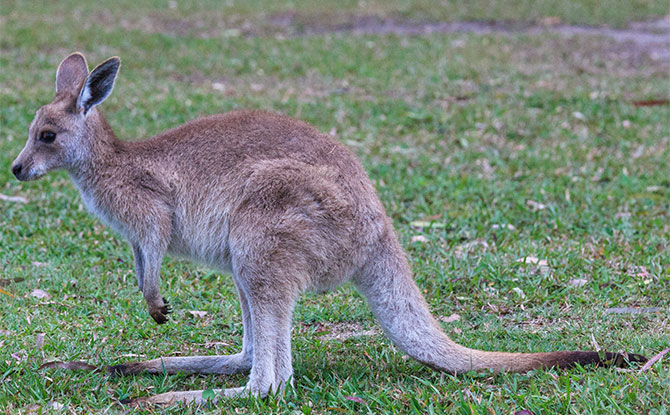

The eastern gray kangaroo is a fascinating marsupial native to Australia. With its distinctive gray fur and powerful hind legs, it is an iconic symbol of the Australian outback.
These kangaroos have adapted to life in varied habitats ranging from forests to grasslands. They are herbivores, mainly feeding on grasses and leaves, and their grazing behavior contributes to ecosystem balance.
The eastern gray kangaroo is known for its unique reproductive habits. Like other marsupials, females have a pouch where they nurture their young, called joeys. After a short gestation period, the tiny newborn kangaroo climbs into the pouch and continues to develop and grow.
Socially, eastern gray kangaroos live in groups called mobs. These mobs range in size and are typically led by a dominant male, known as a boomer. In addition to their hierarchical structure, kangaroos communicate through various vocalizations, body language, and scent marking.
Ermine
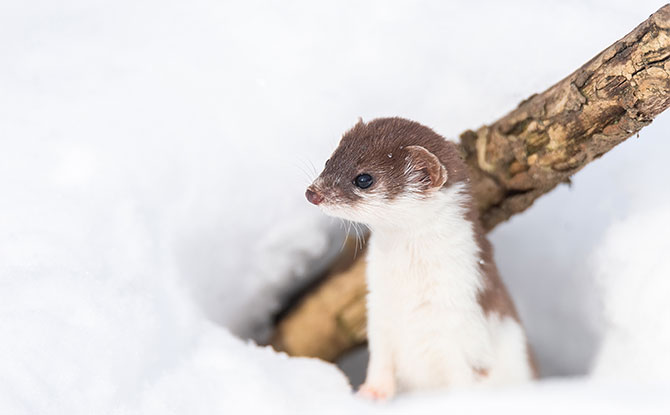

The ermine is a small carnivorous mammal that belongs to the weasel family. It is also known as a stoat. Known for its stunning color-changing fur in winter, the ermine has captivated both scientists and nature enthusiasts alike.
Physical characteristics of the ermine include a slender body, short legs, and a long tail. During the cold winter months, their fur turns from brown to white, providing excellent camouflage in snowy environments. This adaptation helps them hunt for prey and evade predators effectively.
Ermines are highly adaptable creatures and can be found in a wide range of habitats, including forests, grasslands, and tundra regions. They are skilled hunters, preying on small mammals, birds, and insects. With their sharp teeth and agile bodies, they are able to catch their prey with precision.
One interesting behavior of ermines is their ability to mark their territory using scent glands. By secreting a musky odor, they define their boundaries and communicate with other members of their species.
Electric Eel
The electric eel, scientifically known as Electrophorus electricus, is an intriguing fish species found in the freshwater rivers and streams of the Amazon Basin. Despite its name, the electric eel is not actually an eel but a species of knife fish. It is renowned for its unique ability to generate electrical shocks and is considered one of nature’s most remarkable creatures.
Electric organs are the key to the electric eel’s extraordinary ability. These organs are specialized structures located in the fish’s abdomen and can generate strong electric discharges. The electric eel uses these shocks primarily for navigation, sensing its surroundings, and hunting prey. By emitting low-voltage pulses, it can locate prey in murky waters and immobilize them with high-voltage discharges.
Measuring up to 8 feet in length and weighing up to 45 pounds, electric eels are capable of producing shocks of up to 600 volts. These shocks are not only powerful but also well-timed. The electric eel can emit a series of high-frequency electrical discharges to effectively stun and immobilize its prey.
In addition to their remarkable electric abilities, electric eels play a vital role in the Amazon Basin’s aquatic ecosystems. As top predators, they help regulate fish populations and maintain ecosystem balance. Their habitats in the Amazon Basin provide the necessary conditions for their survival, with an abundance of food sources and appropriate water conditions.
Emperor Penguin
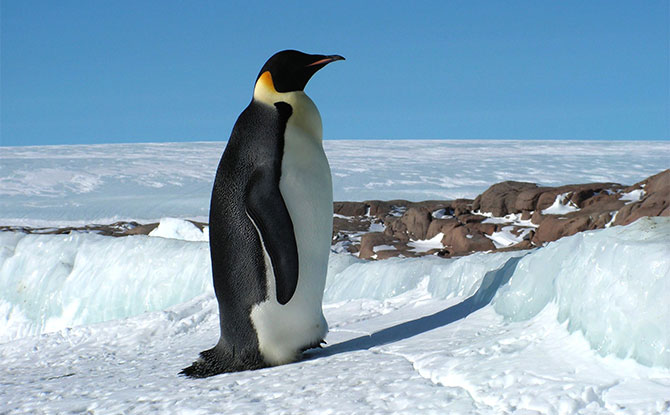

The emperor penguin is a remarkable species that has adapted to survive in the extreme conditions of Antarctica. Known for its resilience, the emperor penguin has captured the imagination of people around the world.
These majestic birds have distinctive physical characteristics that enable them to thrive in the frigid Antarctic environment. They have a black and white plumage, with a sleek body shape that minimizes heat loss. Emperor penguins possess a thick layer of blubber that provides insulation against the cold temperatures.
The life cycle of an emperor penguin is fascinating. Each year, during the Antarctic winter, they gather in large breeding colonies. These colonies can consist of thousands of individuals, and they serve as a way for the penguins to keep warm and protect themselves from predators.
Breeding is a critical stage in the life of an emperor penguin. After laying eggs, the female transfers them to the male, who then incubates them on his feet covered with a brood pouch. During this time, the male emperor penguins endure extreme cold and darkness, while fasting for several months until the females return from foraging in the ocean.
European Hedgehog
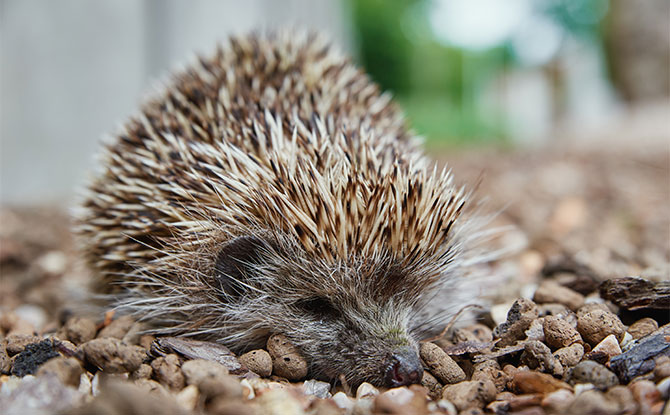

The European hedgehog is a fascinating mammal that is widely recognized for its spiky coat and nocturnal nature. These small creatures are native to Europe and have become a beloved symbol of wildlife conservation.
European hedgehogs have a diverse diet, feeding on a variety of insects, earthworms, snails, and even small vertebrates. Their diet plays an important role in controlling pest populations in ecosystems. They are also known to forage for food in gardens and urban areas, making them a familiar sight to many people.
In terms of habitat, European hedgehogs are adaptable and can be found in a range of environments, including woodlands, hedgerows, meadows, and even suburban gardens. They are skilled at creating nests using leaves, grass, and other vegetation, where they spend their days resting.
One of the most notable features of the European hedgehog is its spikey coat, which serves as a form of protection. When threatened, they curl up into a tight ball, exposing their sharp spines as a deterrent to potential predators.
Eastern Diamondback Rattlesnake
The Eastern Diamondback Rattlesnake is a venomous snake native to the southeastern United States. Known for its impressive size and distinctive diamond-shaped patterns along its back, this species is one of the largest venomous snakes in North America. Adult Eastern Diamondback Rattlesnakes can reach lengths of up to 8 feet and possess potent venom that can be dangerous to humans.
These rattlesnakes are well adapted to their habitats, which include pine forests, scrublands, and marshy areas. They are skilled hunters, using their heat-sensing pits to detect prey such as small mammals and birds. Ambush predators, Eastern Diamondback Rattlesnakes rely on their camouflage and ambush tactics to capture prey.
Due to habitat loss and persecution, the Eastern Diamondback Rattlesnake population has declined significantly over the years. As a result, it is now listed as a species of concern in some states. Efforts are being made to protect and conserve their habitats to ensure the survival of this iconic species.
Eastern Screech Owl
The eastern screech owl is a small owl species known for its distinctive call and nocturnal hunting habits. These owls have a unique ability to blend in with their surroundings, thanks to their mottled gray or reddish-brown feathers that provide excellent camouflage.
Measuring around 7 to 10 inches in length, the eastern screech owl may be small in size, but it is a skilled and efficient hunter. These birds of prey have sharp talons and a keen sense of hearing, allowing them to locate and capture their prey, which primarily consists of small mammals like mice and voles. They are also known to feed on insects, amphibians, and small birds.
Eastern screech owls are primarily active at night, using their excellent night vision and silent flight to silently swoop down on their prey. They have adaptations that enable them to navigate in the dark, such as specialized feathers on their wings that reduce noise during flight.
These owls are cavity nesters, meaning that they nest in tree hollows or man-made structures like nesting boxes. They are also known to take over abandoned nests of other birds. Eastern screech owls have a varied repertoire of calls, including their distinctive trilling or whistling sound that can be heard throughout the night.
European Robin
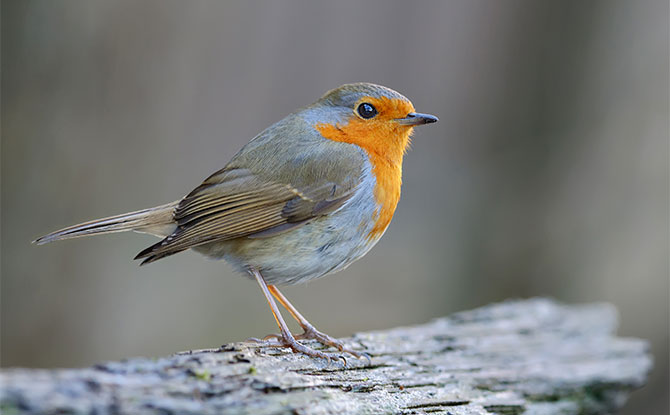

The European robin is a charming songbird that captivates its audience with its melodic song and striking appearance. These small birds, also known as Erithacus rubecula, are native to Europe and parts of Asia. With their bright orange-red breast and face, they are easily recognizable and adored by birdwatchers and nature enthusiasts.
One of the distinctive features of the European robin is its territorial behavior. These birds are known for fiercely defending their territories through song and aggressive displays. They establish and defend their nesting territory during the breeding season, often engaging in vocal duels with rival males. This territorial behavior is an important part of their reproductive success and ensures the survival of their offspring.
European robins are versatile birds that can adapt to a variety of habitats, including woodlands, gardens, parks, and even urban areas. They build their nests in diverse locations, such as tree cavities, hedgerows, and even on building ledges. Their nests are cup-shaped and carefully constructed using moss, leaves, and twigs.
Besides their territorial behavior and captivating song, European robins also hold cultural significance. In folklore and literature, they are often associated with winter and Christmas due to their appearance in snowy landscapes. They have become symbolic of hope, renewal, and joy, making them a favorite subject in poems, songs, and stories.
Eastern Bluebird
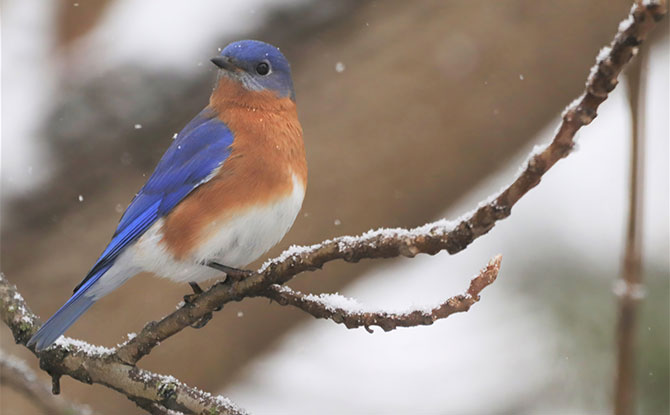

The Eastern Bluebird is a charming songbird known for its vibrant blue plumage and melodious song. They are native to North America and can be found in open woodlands, meadows, and fields.
These small birds are cavity nesters, meaning they are skilled at making their nests in tree cavities or nest boxes. They have a gentle and pleasant song that adds a beautiful melody to their surroundings.
Eastern Bluebirds have distinct physical characteristics, with the males exhibiting brighter blue feathers on their backs, wings, and tail, while the females have a more muted blue-gray coloration. They have short bills and are relatively small in size.
Their diet primarily consists of insects, berries, and fruits. They use their sharp beaks to catch and consume insects, making them beneficial for natural pest control in gardens and farmlands.
Eastern Box Turtle
The eastern box turtle is a fascinating reptile species that inhabits terrestrial habitats. Known for its distinctively patterned shell and remarkable ability to retract into its shell for protection, the eastern box turtle is a unique and captivating creature.
When it comes to diet, eastern box turtles are omnivorous, meaning they consume both plant matter and small insects or invertebrates. This versatility allows them to adapt to various food sources available in their habitat.
Speaking of habitat, the eastern box turtle prefers terrestrial environments such as forests, meadows, and grasslands. They are commonly found in the eastern and central regions of the United States, where they roam freely and explore their surroundings.
One fascinating characteristic of eastern box turtles is their ability to hibernate. During winter months, they bury themselves in leaf litter or dig tunnels in moist soil to protect themselves from the cold temperatures. This behavior allows them to conserve energy and survive until warmer conditions return.
European Otter
The European otter is an enchanting aquatic mammal found in rivers, lakes, and coastal areas across Europe. With its sleek fur and webbed feet, it is perfectly adapted for its semi-aquatic lifestyle. These otters have an unmistakable playful nature, often seen sliding down riverbanks and diving into the water to hunt for fish, their primary diet.
European otters are known for their excellent swimming abilities, using their strong tails and webbed feet to navigate through the water with ease. Their streamlined bodies allow them to reach impressive speeds while hunting and exploring their river habitats. These charismatic mammals can stay submerged for several minutes, using their keen senses to locate prey underwater.
Unfortunately, the European otter population has faced significant declines over the years due to habitat degradation, pollution, and hunting. However, conservation efforts have been implemented to protect and restore otter populations in many European countries. These efforts include habitat restoration projects, pollution control measures, and legislation to enforce hunting restrictions.
European otters play a crucial role in river ecosystems. As top predators, they help maintain the balance of fish populations, ensuring the health and diversity of aquatic habitats. Their presence is an indicator of the overall ecological health of rivers and serves as a reminder of the importance of protecting these fragile ecosystems.
Eastern Chipmunk
The eastern chipmunk is a small mammal known for its energetic movements and unique behaviors. These charming creatures can be found in various habitats in North America, including forests, woodlands, and suburban areas. With their distinctive stripes and bushy tails, they are easily recognizable.
One of the most fascinating characteristics of the eastern chipmunk is its food caching behavior. These small mammals have cheek pouches that they use to gather and store food, such as nuts, seeds, and berries. They will spend their active periods collecting food and then transport it to their underground burrows for later consumption.
The act of food caching plays a crucial role not only in the survival of chipmunks but also in the dispersal of seeds. Chipmunks often forget where they buried their food caches, leading to the growth of new plants in different locations. This process contributes to the diversity and regeneration of forest ecosystems.
The Eastern chipmunk is a remarkable example of adaptation and survival in the animal kingdom. Their small size allows them to navigate through narrow tunnels and burrows, which serve as protection against predators. They also have a keen sense of hearing and vision, helping them detect potential threats.
European Badger
The European badger is a fascinating nocturnal burrowing mammal with distinctive black and white markings. These medium-sized mammals belong to the Mustelidae family and are known for their striking appearance. European badgers have a stout body with short legs and a robust build.
European badgers are primarily nocturnal, meaning they are most active during the night. They have adapted to a nocturnal lifestyle, using their excellent sense of smell and hearing to navigate and locate food in the dark. These creatures are omnivorous, feeding on a variety of plant matter, insects, small mammals, and carrion.
One of the notable features of European badgers is their burrowing behavior. They construct intricate underground burrows called setts, which consist of a network of tunnels and chambers. These setts can be extensive and may house multiple badger families. Badgers use their strong claws and powerful limbs to dig and maintain their burrows.
European badgers are social animals and live in groups known as clans. A typical clan consists of a dominant breeding pair, their offspring, and potentially other subordinate badgers. Clan members communicate with each other through a repertoire of vocalizations and scent marking.
These badgers are found throughout Europe and parts of Asia. They inhabit a range of habitats, including forests, woodlands, grasslands, and farmlands. European badgers are known for their adaptability and can thrive in various environments.
Eastern Quoll
The eastern quoll is a small marsupial species native to Australia. It is known for its unique physical characteristics, diet, and behavior. Eastern quolls are predominantly found in the eastern parts of Australia, including Tasmania. They have a distinctive appearance with a compact body, short legs, and a pointed snout. Their fur is usually brown or grey with white spots, providing effective camouflage in their natural habitat.
The diet of the eastern quoll consists mainly of insects, small mammals, birds, and fruits. They are skilled hunters, using their sharp teeth and claws to catch their prey. Eastern quolls are generally solitary animals, although they may form small social groups during breeding season or in areas with abundant food resources.
Eland
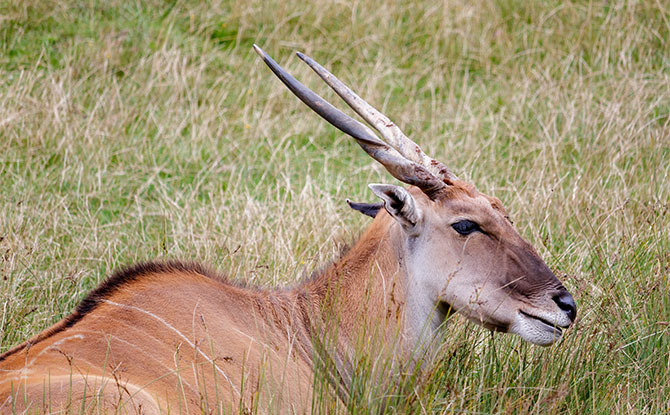

Elands are large antelopes that inhabit the vast grasslands and savannas of Africa. Known for their elegant stature and impressive horns, these magnificent creatures are an integral part of the African ecosystem.
One of the largest antelope species, elands possess distinct physical characteristics. They have a robust build, with long legs and a muscular body, allowing them to cover great distances while grazing. Both male and female elands have magnificent spiral-shaped horns that can reach impressive lengths of up to three feet.
The African savannas provide the perfect habitat for elands, as they thrive in open grasslands with access to water sources. These antelopes display a unique social structure, forming herds consisting of females and their offspring, while males often form bachelor herds or live solitary lives.
Elands are herbivores and have a grazing behavior, primarily feeding on grasses and low-lying vegetation. Their grazing habits contribute to the shaping of the savanna ecosystem, as they help maintain grassland balance and prevent the encroachment of woody vegetation.
Eurasian Beaver
The Eurasian beaver, also known as Castor fiber, is a fascinating mammal that plays a crucial role as an ecosystem engineer. Known for its exceptional dam-building abilities, the Eurasian beaver is responsible for creating wetland habitats that benefit a wide range of plant and animal species.
With a body length of up to 3 feet and a weight of around 50 pounds, the Eurasian beaver is the largest rodent in Eurasia. It has a waterproof coat of fur and webbed hind feet, which make it an excellent swimmer. The beaver’s broad, flat tail serves multiple purposes, including aid in swimming, communication, and storing fat reserves.
Eurasian beavers primarily inhabit freshwater environments such as rivers, streams, and lakes. They thrive in areas with abundant vegetation, which they use as building materials for their dams and lodges. The beavers’ dam-building activities not only create ponds but also regulate water flow, prevent soil erosion, and improve water quality.
As an ecosystem engineer, the Eurasian beaver has a significant impact on its surroundings. By creating wetland habitats, their dams provide shelter and breeding grounds for various species of amphibians, fish, and invertebrates. The flooded areas also support a diverse range of plants, contributing to increased biodiversity and overall ecosystem health.
Emperor Tamarin
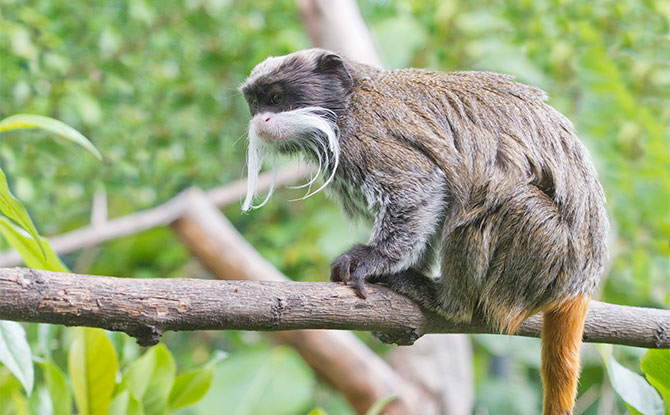

The Emperor Tamarin is a fascinating primate that is native to the forests of South America. One of its most distinguishing features is its long white mustache, which gives it a regal appearance and lends to its name. These small primates are known for their playful and social behavior, often seen hopping and leaping through the trees in search of food and engaging in social interactions with their troop members.
In terms of physical characteristics, the Emperor Tamarin has a small, compact body and typically weighs between 400 and 700 grams. Their coat is predominantly black, with a reddish-orange hue on their backs and a white abdomen. They have large eyes and sharp claws, which aids in their tree-dwelling lifestyle. As a primate, they share many similarities to humans, including grasping hands and opposable thumbs.
Emperor Tamarins primarily inhabit the rainforests of South America, including countries like Brazil, Peru, and Bolivia. They prefer dense vegetation and spend the majority of their time in the upper forest canopy. These primates are omnivorous, meaning they consume a variety of foods, including fruits, insects, nectar, and small vertebrates.
The Emperor Tamarin lives in social groups called troops, consisting of around 3 to 10 individuals. They have a complex social structure with a dominant male and female pair leading the troop. The other members of the group assist in caring for and protecting the offspring. This cooperative behavior helps ensure the survival and well-being of the troop.
Eastern Brown Snake
The eastern brown snake is a venomous snake species native to Australia. It is highly adaptable and can be found in a variety of habitats, including forests, grasslands, and urban areas. These snakes have a slender body, ranging in color from light brown to dark brown, with some individuals displaying orange or reddish hues.
Their venom is potent and can cause severe symptoms in humans if bitten. It contains neurotoxins and coagulants that affect the nervous system and blood clotting. However, bites from the eastern brown snake are relatively rare, as they are generally shy and will only bite if provoked or threatened.
Eastern brown snakes are active hunters, primarily feeding on small mammals, birds, and reptiles. They use their venom to immobilize their prey, allowing them to consume it more easily. These snakes are known for their quick and agile movements, and can strike with great speed when hunting or defending themselves.
European Green Woodpecker
The European green woodpecker is a captivating bird species known for its vibrant green plumage and distinctive call. These woodpeckers can be found across Europe, inhabiting various forested areas.
Physically, European green woodpeckers have a sleek body with a prominent red crown and a striking green coloration on their wings and back. They also have a robust bill, ideal for drilling into tree trunks in search of insects and ants.
Feeding habits of the European green woodpecker primarily consist of ants and their larvae, making them an essential part of the forest ecosystem. They have a specialized tongue that allows them to extract insects from crevices in the bark.
When it comes to nesting, European green woodpeckers typically make their homes in tree cavities or old woodpecker holes. They lay their eggs in the cozy environment of these nests and diligently protect and care for their young.
The European green woodpecker serves as a beautiful testament to the diversity and importance of bird species in our natural environments.
Eastern Hognose Snake
The Eastern Hognose Snake is a fascinating non-venomous snake that can be found in North America. Known for its unique physical characteristics and behaviors, this snake is a noteworthy species in the region’s wildlife.
The Eastern Hognose Snake has a distinctive upturned snout, earning it the name “Hognose.” This adaptation allows it to dig in sandy soils and burrow in search of prey, such as toads and small mammals. They are identifiable by their keeled scales and patterned appearance, which includes various color variations ranging from gray to brown or green.
One interesting defensive tactic of the Eastern Hognose Snake is its ability to mimic the behaviors of venomous snakes when threatened. It may flatten its head, hiss loudly, and even strike with its mouth closed. However, it is important to note that despite this behavior, the Eastern Hognose Snake is harmless to humans.
Eastern Hognose Snakes can be found in a variety of habitats, including grasslands, forests, and sandy areas. They are particularly fond of areas with loose soils, allowing them to burrow efficiently. Due to their adaptability, they have a relatively wide distribution across the continent, from southern Canada to the southeastern United States.
Emperor Moth
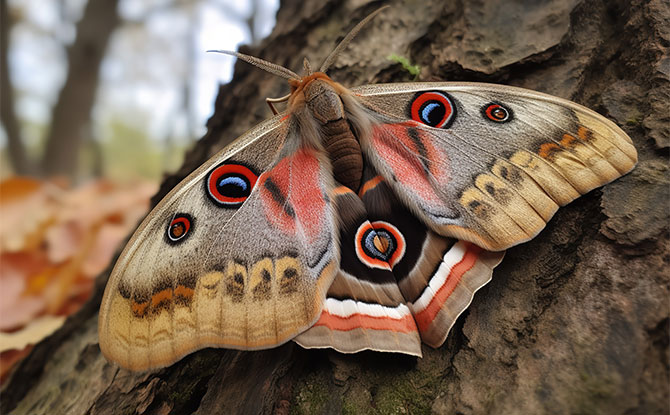

The emperor moth is a magnificent and vibrant species of moth that can be found in Europe and Asia. With its large size and colorful wings, it is truly a sight to behold. The emperor moth belongs to the family Saturniidae, which is known for its beautiful and distinct moths.
One of the most striking characteristics of the emperor moth is its wingspan, which can reach up to 4.5 inches (12 centimeters). The males usually have more vibrant and colorful wings, featuring a mix of orange, yellow, and pink hues, while the females have more subdued colors.
The life cycle of the emperor moth is fascinating and undergoes several stages. It starts with the eggs being laid on the leaves of host plants such as heather and honeysuckle. The eggs hatch into caterpillars, which feed on the leaves and grow in size. The caterpillars then form cocoons and undergo metamorphosis to transform into adult moths.
Mating is a crucial part of the emperor moth’s life cycle. The males use their highly sensitive antennae to detect the pheromones released by the females. Once a male finds a female, they engage in an intricate courtship dance. During the dance, the male secretes a perfume-like scent to attract the female. Once mating occurs, the female will lay her eggs and the cycle begins again.
The emperor moth plays a significant role in the ecosystem as a pollinator. As they feed on nectar from flowers, they inadvertently transfer pollen from one plant to another, aiding in the reproduction of various plant species.
European Mole
The European mole is a fascinating burrowing mammal that is known for its underground lifestyle and specialized adaptations. These small creatures have unique physical characteristics that enable them to thrive in underground habitats.
The European mole has a cylindrical body, short legs, and velvety fur that allows them to move effortlessly through the soil. Their front paws are incredibly powerful, equipped with sharp claws that help them dig intricate burrow systems.
Underground habitats provide the European mole with protection from predators and extreme weather conditions. Their intricate burrow networks consist of tunnels for foraging, sleeping chambers, and even nurseries for their young. These burrows also serve as highways for the mole to navigate their territory efficiently.
The European mole is an insectivorous mammal, feeding primarily on earthworms, insects, and other small invertebrates found in the soil. Their diet contributes to the control of pest populations and helps maintain a healthy balance in soil ecosystems.
These remarkable creatures play an important role in soil ecosystem processes. As they dig tunnels and aerate the soil, they improve its drainage and increase nutrient availability. This, in turn, benefits plant growth and overall ecosystem health.
Despite their importance, European moles often go unnoticed as they spend most of their lives underground. However, their presence and activities have a significant impact on the vitality of soil ecosystems.
Eastern Newt
The eastern newt is a fascinating amphibian known for its unique ability to undergo metamorphosis and adapt to both aquatic and terrestrial environments. It can be found in various parts of North America, particularly in the eastern regions.
The eastern newt’s life cycle is characterized by distinct stages. It begins as an aquatic larva, commonly referred to as a red eft. During this stage, the newt has bright orange or red skin that serves as a warning to predators. As the red eft matures, it transitions into the aquatic adult stage, which is characterized by a greenish-brown coloration. This stage lasts for several years before the newt reaches sexual maturity.
During their aquatic phase, eastern newts are equipped with gills and spend most of their time in ponds, lakes, and slow-moving streams. They have the ability to regenerate lost limbs, making them incredibly resilient creatures. As they transition into their terrestrial stage, they develop lungs and grow a rough, bumpy skin. In this stage, they will wander the forest floor in search of food, which primarily consists of insects, worms, and small invertebrates.
European Hare
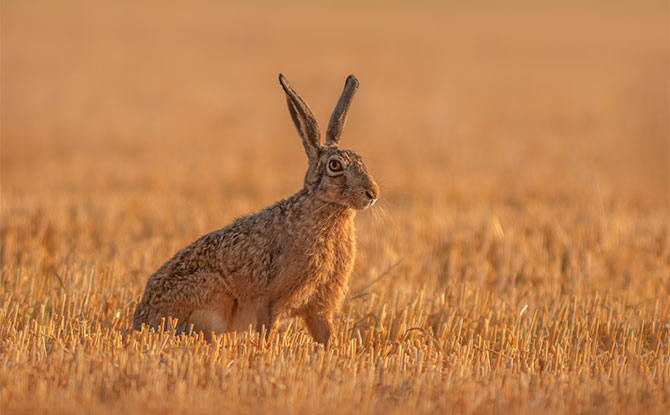

The European hare is a swift-running herbivorous mammal found in Europe and parts of Asia. These hares are known for their agility and speed, making them excellent runners. They have long, powerful hind legs that allow them to reach speeds of up to 70 kilometers per hour. Their slender body and long ears contribute to their aerodynamic form, enabling them to swiftly navigate their surroundings.
European hares prefer open grasslands and agricultural fields as their habitat. They are herbivorous mammals, feeding mainly on grasses, herbs, and crops. Their ability to consume a wide variety of plant material allows them to adapt to different environments. In some regions, hares are considered pests due to their crop damage, while in others, they are valued for their role in maintaining a healthy ecosystem.
These swift runners play an important role in their ecosystems. They are prey for many predators, including birds of prey, foxes, and hawks. Their presence helps maintain a balance in predator-prey dynamics. Hares also contribute to nutrient cycling by dispersing plant seeds through their diet and acting as secondary consumers in food chains.
In various countries and cultures, European hares hold cultural significance. They are associated with fertility, agility, and luck. In mythologies and folktales, hares are often portrayed as clever and quick-witted creatures. Their presence in local traditions and folklore reflects the enduring fascination with these swift and herbivorous mammals.
Eastern Gorilla
The eastern gorilla is one of the largest primates and is classified as a critically endangered species. These magnificent creatures are characterized by their robust build and powerful presence. Eastern gorillas have distinct features such as a broad, muscular chest, large hands, and a prominent sagittal crest on their skulls.
Eastern gorillas live in cohesive social structures called troops, led by a dominant silverback male. These troops typically consist of multiple females, their offspring, and a few subordinate males. Gorillas are highly intelligent and display complex social behaviors, including vocalizations, grooming, and territorial displays.
The habitat requirements of eastern gorillas include dense forests and montane regions in Central and Eastern Africa. They are herbivorous, primarily feeding on leaves, fruit, bark, and other plant material. As important seed dispersers, gorillas play a crucial role in maintaining the biodiversity of their ecosystems.
Eurasian Red Squirrel
The Eurasian red squirrel is a charming tree-dwelling mammal known for its vibrant red fur and bushy tail. With their delightful appearance, they have captured the hearts of many nature enthusiasts and wildlife lovers. These small creatures are native to Europe and parts of Asia, where they can be found in a variety of wooded habitats.
Eurasian red squirrels have a diverse diet that includes a wide range of foods such as nuts, seeds, berries, and even bird eggs. They are excellent climbers and spend most of their lives in trees, using their sharp claws and strong limbs to navigate their arboreal surroundings. Their agility and adaptability enable them to traverse the treetops with ease.
While their vibrant red fur is their most distinctive feature, Eurasian red squirrels also have a white belly and ear tufts during the winter months. This coloration change helps them blend into their surroundings and provides effective camouflage against predators.
Eurasian red squirrels play an important role in their ecosystems as seed dispersers. By burying nuts and seeds, they help promote forest regeneration and maintain the biodiversity of their habitats. Their interactions with other squirrel species, such as the gray squirrel, are also an area of interest for researchers studying interspecies dynamics.
Egyptian Mongoose
The Egyptian mongoose is a small carnivorous mammal native to Africa. It is known for its sleek appearance and agile hunting abilities. This mongoose has a slender body, short limbs, and a long tail, allowing it to move quickly and stealthily through its environment. Its fur is typically brown or gray in color, providing camouflage in its natural habitat.
As a carnivore, the Egyptian mongoose primarily feeds on small animals such as rodents, birds, reptiles, and insects. It is a skilled hunter, using its sharp teeth and claws to catch its prey. This mongoose is also known for its adaptability, as it can thrive in various habitats including forests, grasslands, and savannahs.
Socially, the Egyptian mongoose is known to live in small family groups consisting of a breeding pair and their offspring. These groups work together to defend their territory and protect their young. They communicate through a variety of vocalizations and scent markings.
European Rabbit
The European rabbit, scientifically known as Oryctolagus cuniculus, is a burrowing mammal that is widely distributed across Europe, North Africa, and parts of Asia. As its name suggests, the European rabbit is native to Europe but has been introduced to various other regions around the world.
Known for its herbivorous diet, the European rabbit primarily feeds on grass, herbs, and other plant material. They have specialized adaptations for grazing, such as strong incisors for cutting through tough vegetation. Their diet plays a significant role in shaping their habitats, as their feeding behavior can impact plant growth and distribution.
The European rabbit is a social animal that lives in colonies called warrens. These warrens consist of interconnected burrows that provide shelter and protection. The extensive burrows help the European rabbits escape predators and regulate their body temperature in different seasons.
European Goldfinch
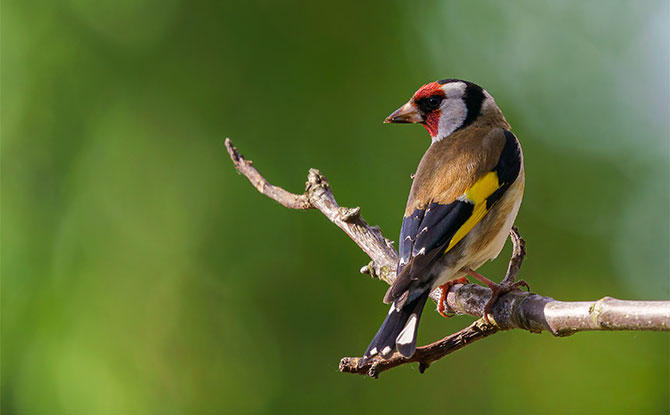

The European goldfinch, scientifically known as Carduelis carduelis, is a delightful songbird found across Europe, Asia, and North Africa. Known for its stunning colorful plumage, it is a favorite among birdwatchers and nature enthusiasts. European goldfinches are small birds, measuring around 12 centimeters in length, with vibrant red faces, black wings marked with bright yellow bars, and a striking yellow patch on their wings.
These beautiful birds are often found in open, semi-wooded habitats such as meadows, gardens, and parks. They have a diverse diet, feeding primarily on seeds from thistles, dandelions, and other plants. Their unique beak shape allows them to extract seeds from flower heads, making them well-suited for their diet.
In addition to their physical beauty, European goldfinches are also known for their melodious song. Their musical calls can often be heard during the breeding season as males sing to attract mates and establish territories. These social birds also form flocks outside of the breeding season, providing a wonderful sight as they fly together in synchronized patterns.









